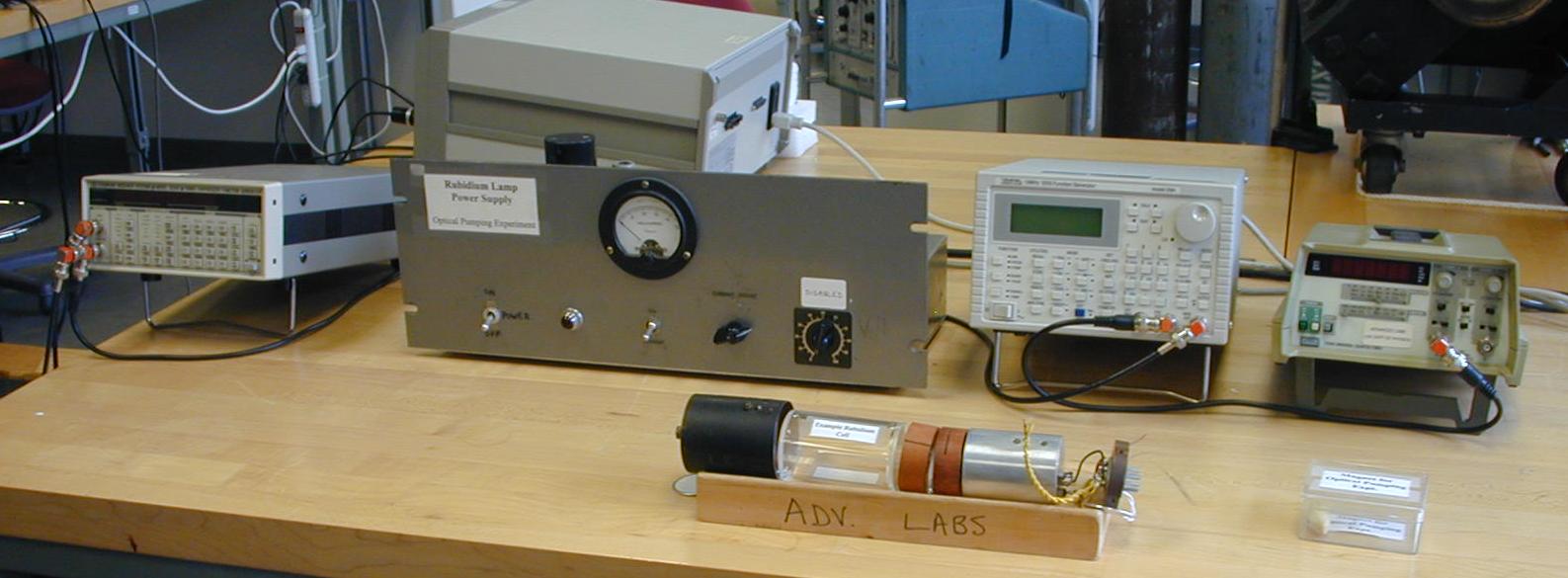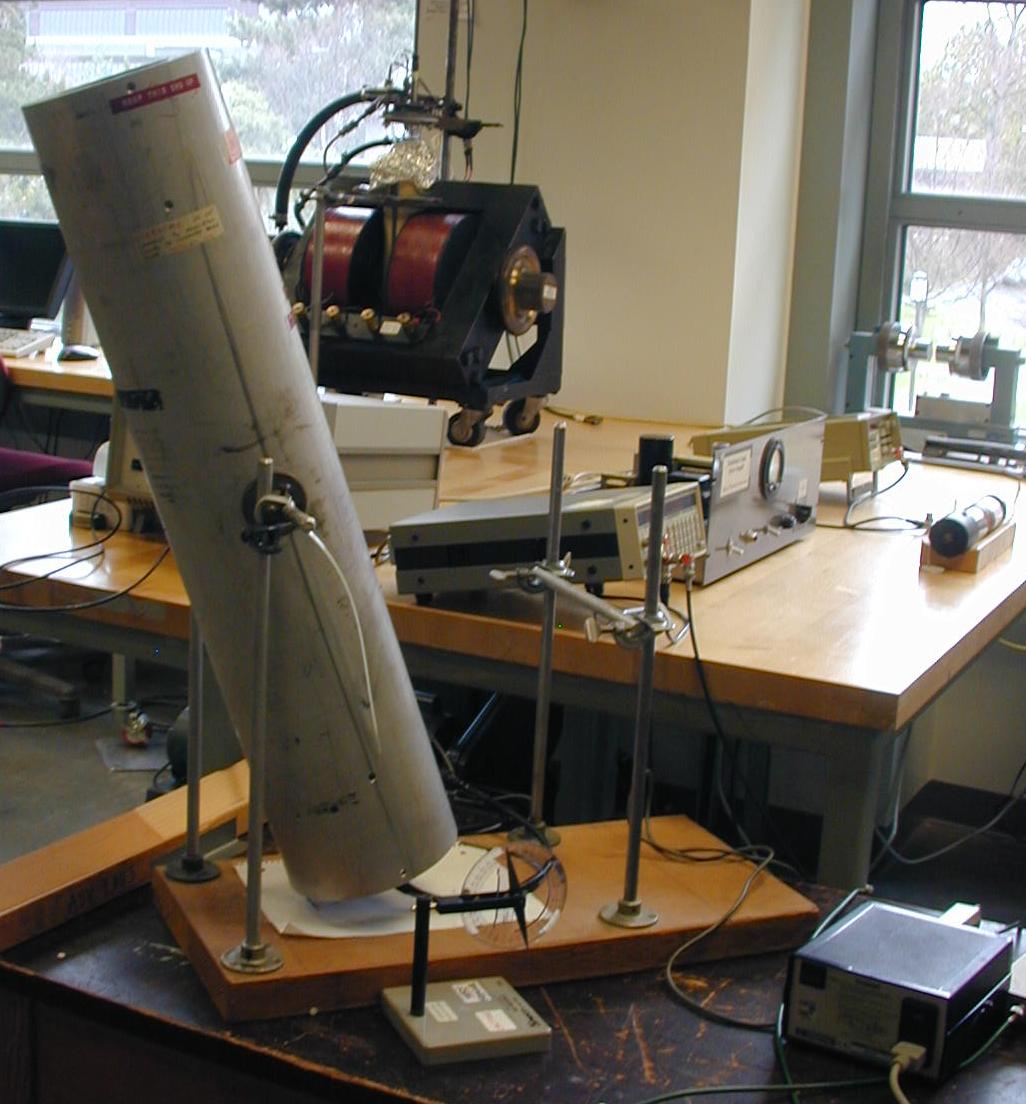Optical pumping in rubidium

 This elegant experiment introduces the double resonance technique,
whereby magnetic resonance transitions are detected by optical
absorption. Circularly polarized light from a Rb lamp passes through
a cell containing Rb vapor. A weak magnetic field is applied to the
cell, splitting the ground state sublevels. Transition rules are
invoked to explain how the population of these sublevels becomes
inverted, with the result that optical transitions from the ground
state to the first excited state are greatly reduced. Re-distribution
among the ground state sublevels is achieved by application of a
radio-frequency field, resulting in increased optical absorption in
the cell. The magnitude of the magnetic field is thus measured by
frequency, a parameter readily measured to high accuracy, making this
double resonance technique useful as a highly sensitive magnetic field
probe.
This elegant experiment introduces the double resonance technique,
whereby magnetic resonance transitions are detected by optical
absorption. Circularly polarized light from a Rb lamp passes through
a cell containing Rb vapor. A weak magnetic field is applied to the
cell, splitting the ground state sublevels. Transition rules are
invoked to explain how the population of these sublevels becomes
inverted, with the result that optical transitions from the ground
state to the first excited state are greatly reduced. Re-distribution
among the ground state sublevels is achieved by application of a
radio-frequency field, resulting in increased optical absorption in
the cell. The magnitude of the magnetic field is thus measured by
frequency, a parameter readily measured to high accuracy, making this
double resonance technique useful as a highly sensitive magnetic field
probe.